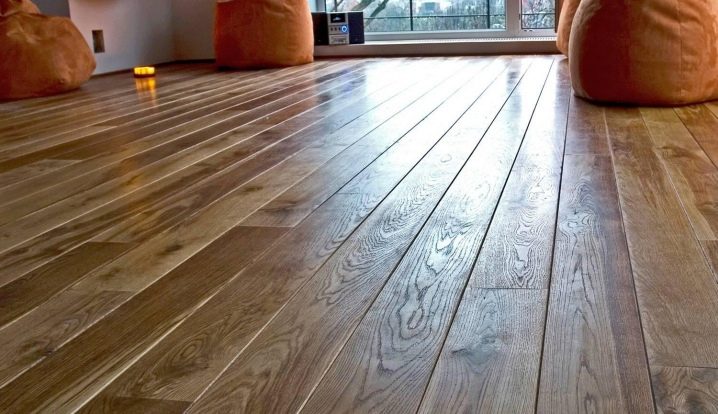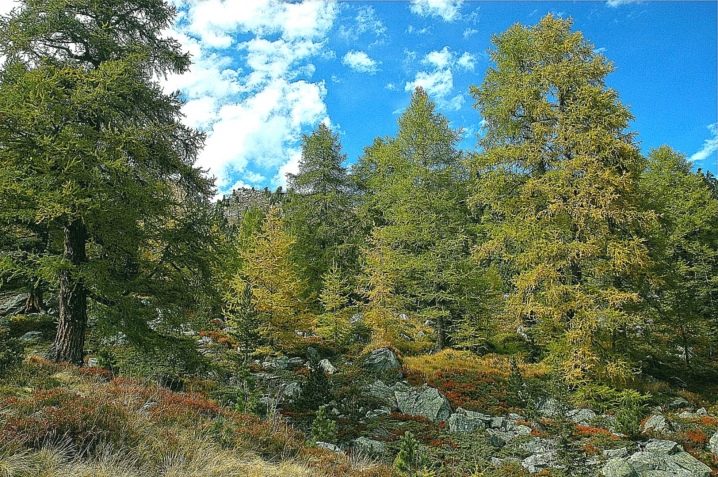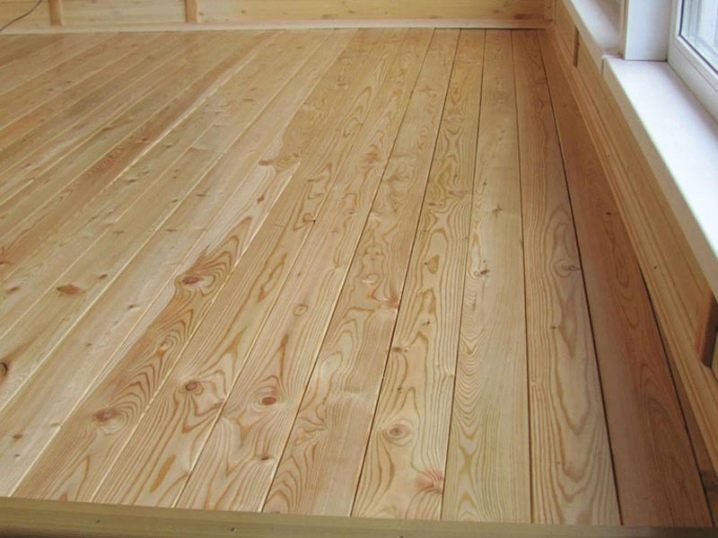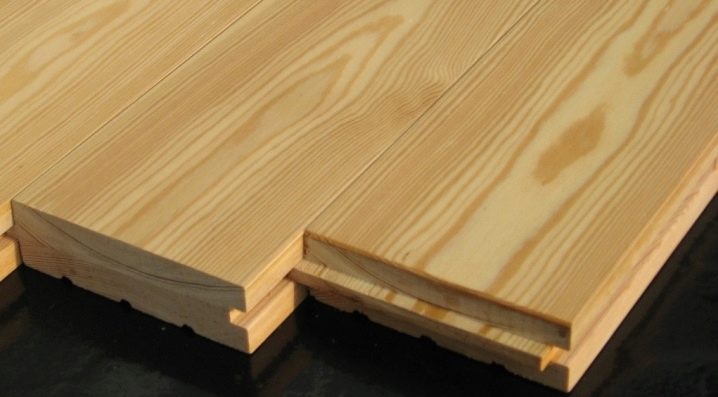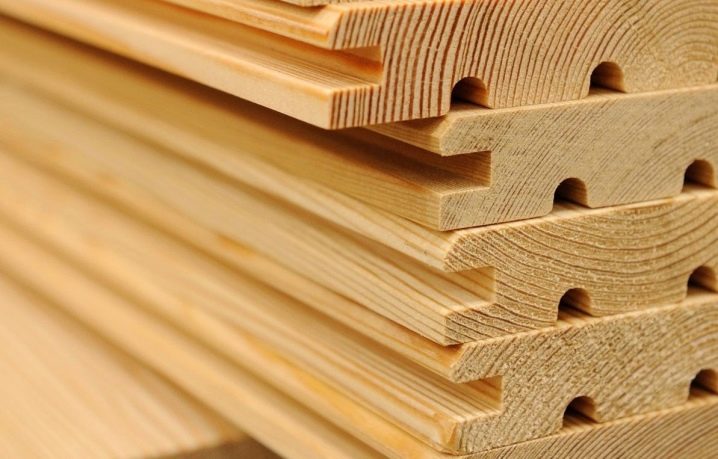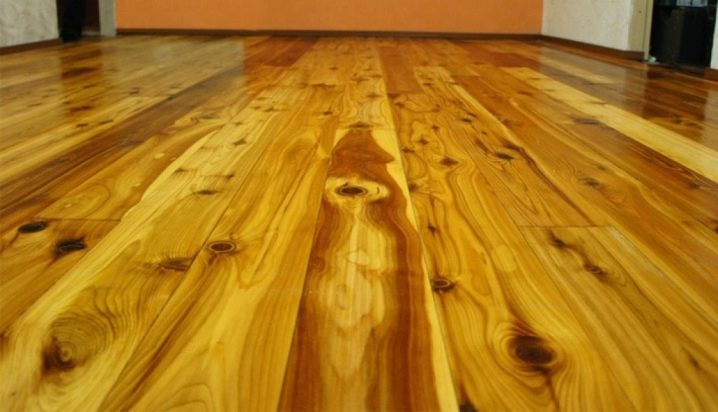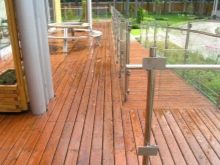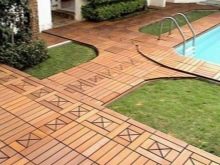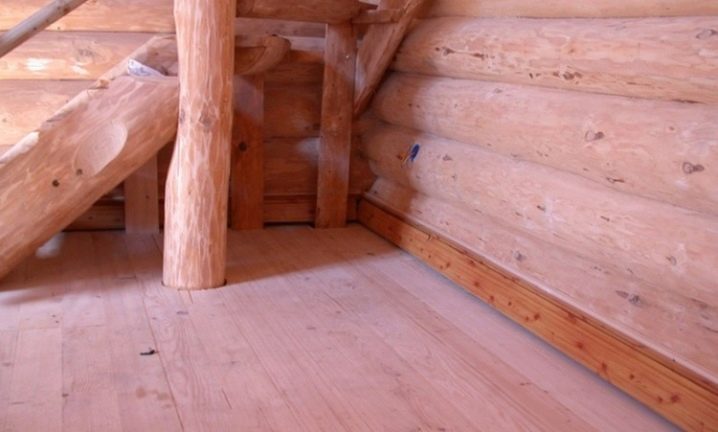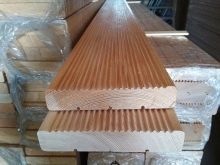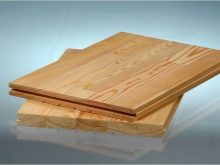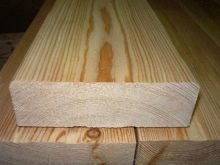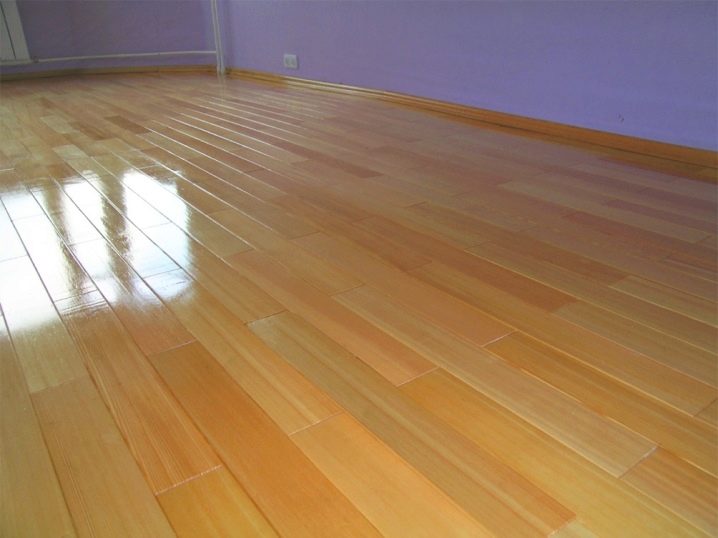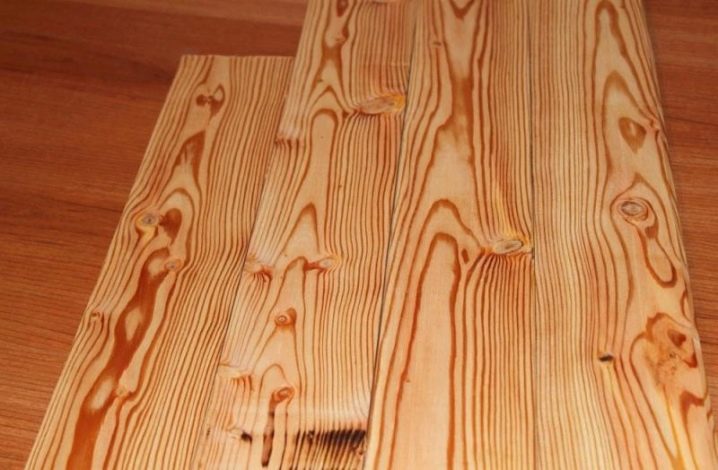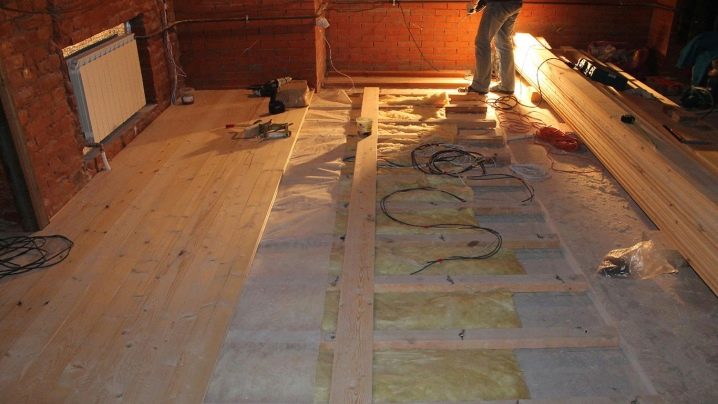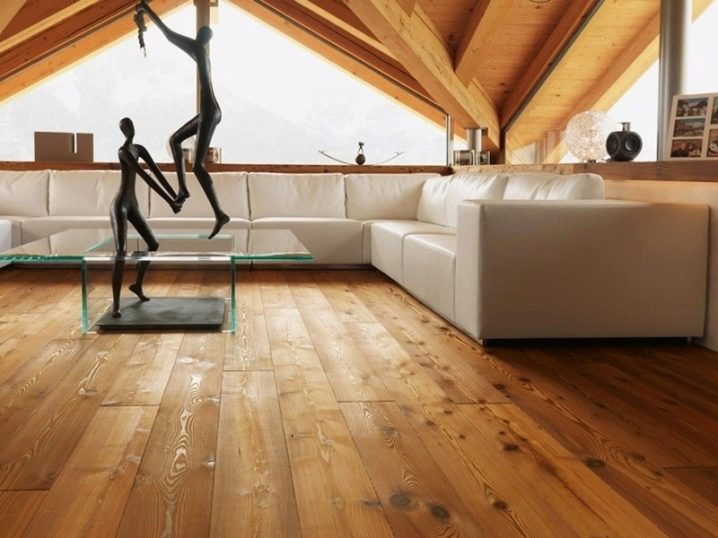Advantages and disadvantages of larch floor

The board as a floor covering is used by people not one century. Currently, wooden floor remains one of the highest priority options in residential buildings. The flooring uses wood of many types of wood, among which larch stands out. We will tell about the peculiarities of larch wooden floor in this article.
What is characteristic of larch?
The larch tree genus consists of about a dozen close species that grow in northern latitudes in temperate and cold climates.They are the predominant species in the taiga forests of Siberia and the Far East. Trees grow tall (up to 50 meters), have powerful trunks and wide branches. The needles of these trees are soft needles of a light green or bluish color.
Siberian larch is valued more than the European, and is considered one of the most valuable wood species in industrial production. Thanks to its durable and rotting wood, it is widely and for a long time used in construction.
In previous centuries, it was used in the construction of Roman amphitheaters, ships, dams and houses. For example, the world-famous Italian Venice was built on stilts of larch. Over many centuries of contact with seawater, piles have become even stronger, and can be compared with concrete or steel beams.
If earlier larch was widespread even in the central regions of Russia, now its main growth is in Siberia.
Sizes and types of flooring
Such a widely used material, such as flooring, is made from an array of high-quality Siberian larch radial cut.Modern technologies allow to produce floor coverings with optimal use of raw materials. An example of this is the board spliced in length. This material is a combination of several, ideal for its characteristics, pieces of board.
In finished form, lumber has no branches, cracks, dark spots and other flaws.
There are standards in the manufacture of products: the length of the boards is from 2 to 6 meters, and the width is from 8 to 14 centimeters. The thickness of the products may vary significantly (from 12 to 48 mm). The thicker the board, the more often it will be possible to sand the floor in the future.. For example, an array 35 mm thick can be sanded up to 15 times.
Profiled flooring is provided on one of the edges of the groove, and on the other - a crest, resulting in a tight closure in the form of a lock.
For the formation of a smooth and stable floor surface, without cracks and gaps, the boards are equipped with dowels. For good air circulation and prevent cracking on the back of the boards, compensatory cuts are made.
In addition to massive, made and glued board radial cut.According to its characteristics, it surpasses the usual floorboards.
Such material is stronger and not subject to deformation.
Features larch
Larch wood has unique properties. Thanks to the resin impregnation, the board made of this tree is almost not deformed and does not rot, even in conditions of high humidity. With prolonged contact with water, wood becomes even stronger. One of the properties of wood is its weight, it is much heavier than water.
Of all the conifers, larch has the highest hardness (according to the Brinell scale of 3.2). Wood does not lose its properties with temperature changes from plus 50 degrees to minus 60 degrees Celsius.
Due to the presence of gum in the wood of larch, it does not suffer damage from insects and fungi.
Externally, larch boards are very beautiful, have an attractive pattern in the form of annual rings and amber color. Floors made of this material can be installed both indoors and outdoors: on terraces, balconies. Well make of it garden paths. Larch floors are well suited for bath complexes and pools.
Pros and cons of larch floors
Larch wood is very popular and is widely used in the manufacture of floors due to the following advantages:
- Low thermal conductivity of the material does not require additional thermal insulation.
- Good sound absorption creates pleasant acoustics.
- Excellent wear resistance allows very long-term operation with proper care.
- Relatively low price (in comparison with oak and exotic species).
- Environmentally friendly material that destroys harmful bacteria, has a positive effect on the health of people living in the house.
- Good breathability creates a beneficial microclimate in the room, the ability to absorb excess moisture.
- Attractive appearance, thanks to the special and rich texture of wood, colors. Such floor will be decoration of your house.
- High moisture resistance allows to use boards in damp rooms without loss of quality.
- Does not undergo biological damage: fungi, mold and insect pests.
- It does not oxidize and retains its original shape, color and texture.
- Resistance to static bending due to its strength.
Among the disadvantages of the larch floor are:
- High price compared to cheaper wood species.
- There is a possibility of acquiring low-quality material due to the fact that wood is difficult to dry.
- Not recommended for the "warm floor" system.
- Low degree of fire safety, which is characteristic of all types of wood.
Types of flooring
By grades boards are divided into the following:
- extra - grade, characterized by the complete absence of defects and the same type of pattern;
- grade A - the presence of a small number of knots, small cracks and natural color change is allowed;
- grade B - greater number of defects;
- grade C - the largest number of defects.
According to the types of boards are divided into such as sex, decking, terraced, powerful parquet and deck flooring.
Tips for choosing
When choosing floorboards from larch, use the advice of professionals:
- When buying, pay attention to the presence of cracks, scratches and chips. Even a small crack can easily grow if you drop the board.
- Pay attention to the presence of knots, bark and irregularities. If you want to use material to build a fence,then the presence of these defects is not scary. Another thing is to use it for laying the floor, in this case it is necessary to choose the ideal board.
- Some boards become curved as a result of improper drying. This defect is called warping and is longitudinal and transverse. Such boards cannot be used for laying the floor.
- When purchasing the material, ask the seller if the boards have been impregnated with chemicals and whether they are safe or not for human health.
- Do not forget to bring a tape measure and check with the purchase the length, width and thickness of the purchased material. Even a small error of a few millimeters will make the floor uneven and will create problems during its installation.
- It is necessary to check the conformity of the grooves and spikes. This is done by attaching the boards to each other side.
Peculiarities of laying and caring for larch floors
Lay the floorboards should be on a flat horizontal plane without distortions to prevent the deformation of the floor and the appearance of cracks. When constructing a floor structure, care must be taken to ensure a reliable and high-quality ventilation system of the underfloor space.
If the floor is installed on the first floor, then in order to prevent sudden temperature changes, it is necessary to ensure reliable thermal insulation.
Before laying the material must undergo acclimatization unpacked, that is, about a week to stay in the room where the floor will be equipped.
If the boards have not undergone industrial processing, they can be self-coated with protective agents: varnish, paint or wax. Periodically it is necessary to update the protective layer.
It is possible to care for a ready floor by means of usual means. Periodically wipe the floor with a damp cloth or use a vacuum cleaner. Do not walk on this floor in shoes with thin high heels. In places of constant walking to protect the floor from abrasion, use carpet.
Larch boards will make your floor quality and safe. Such a floor covering, checked for centuries, will decorate any room, make it warm and cozy.
In the next video you can see the features of the larch solid wood laying.
